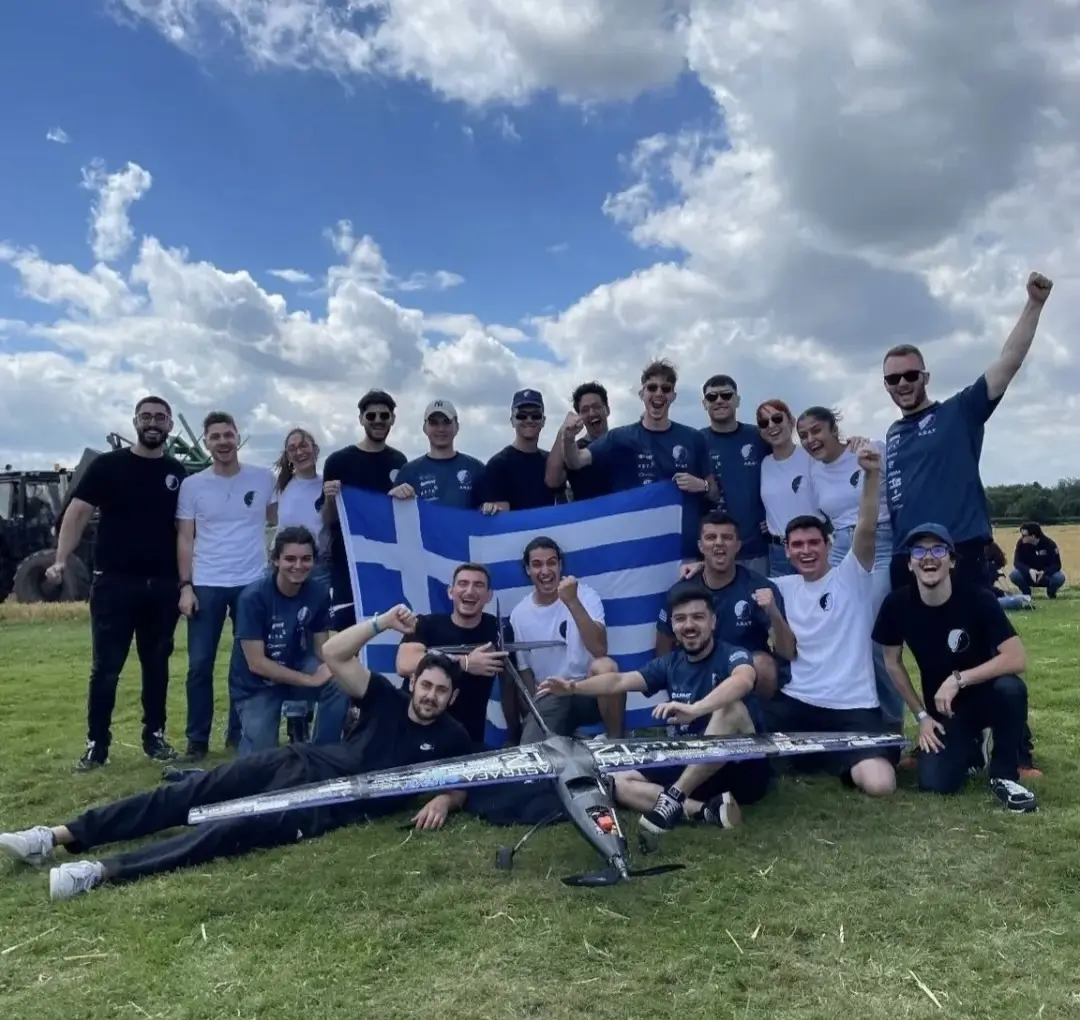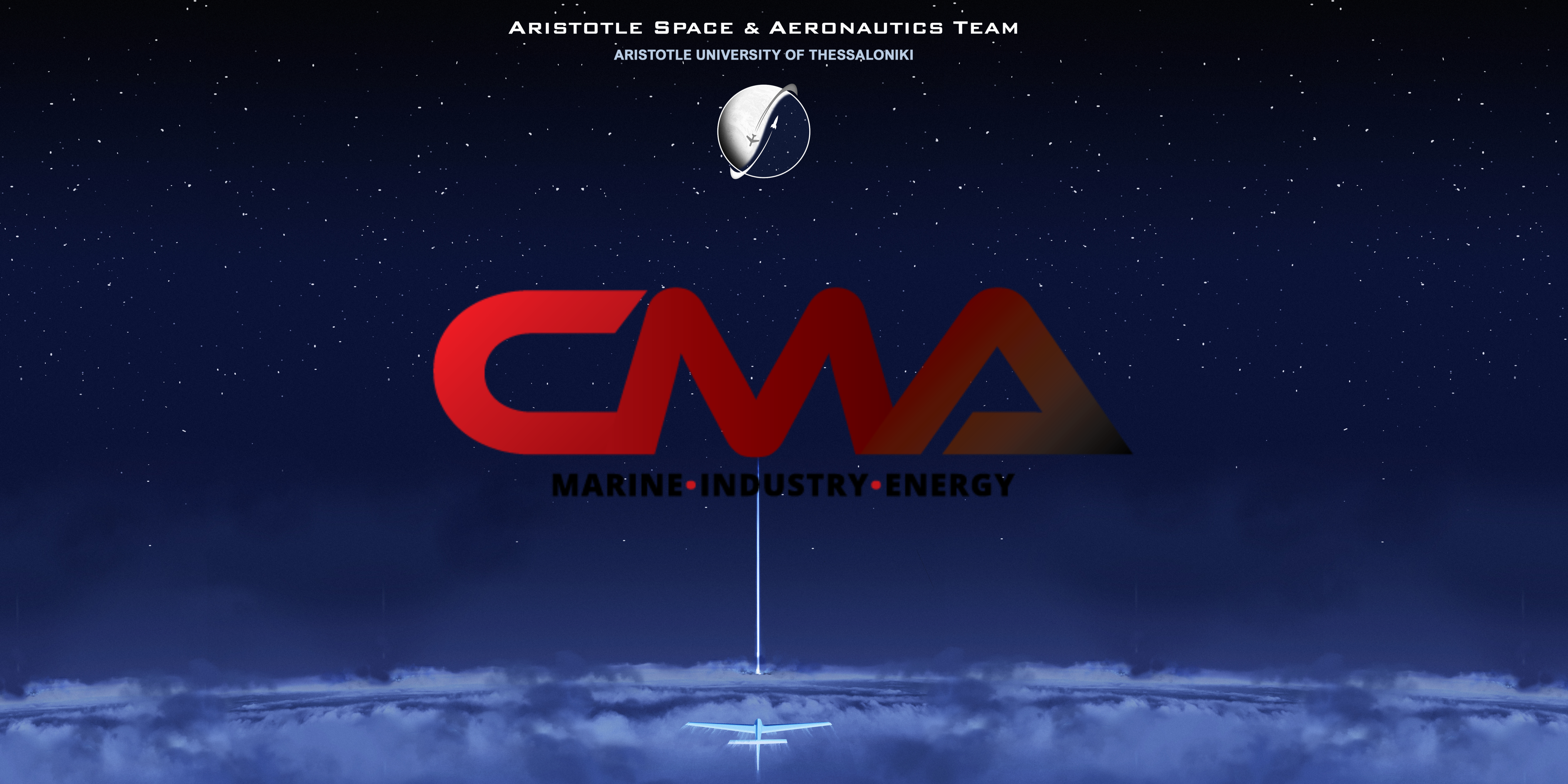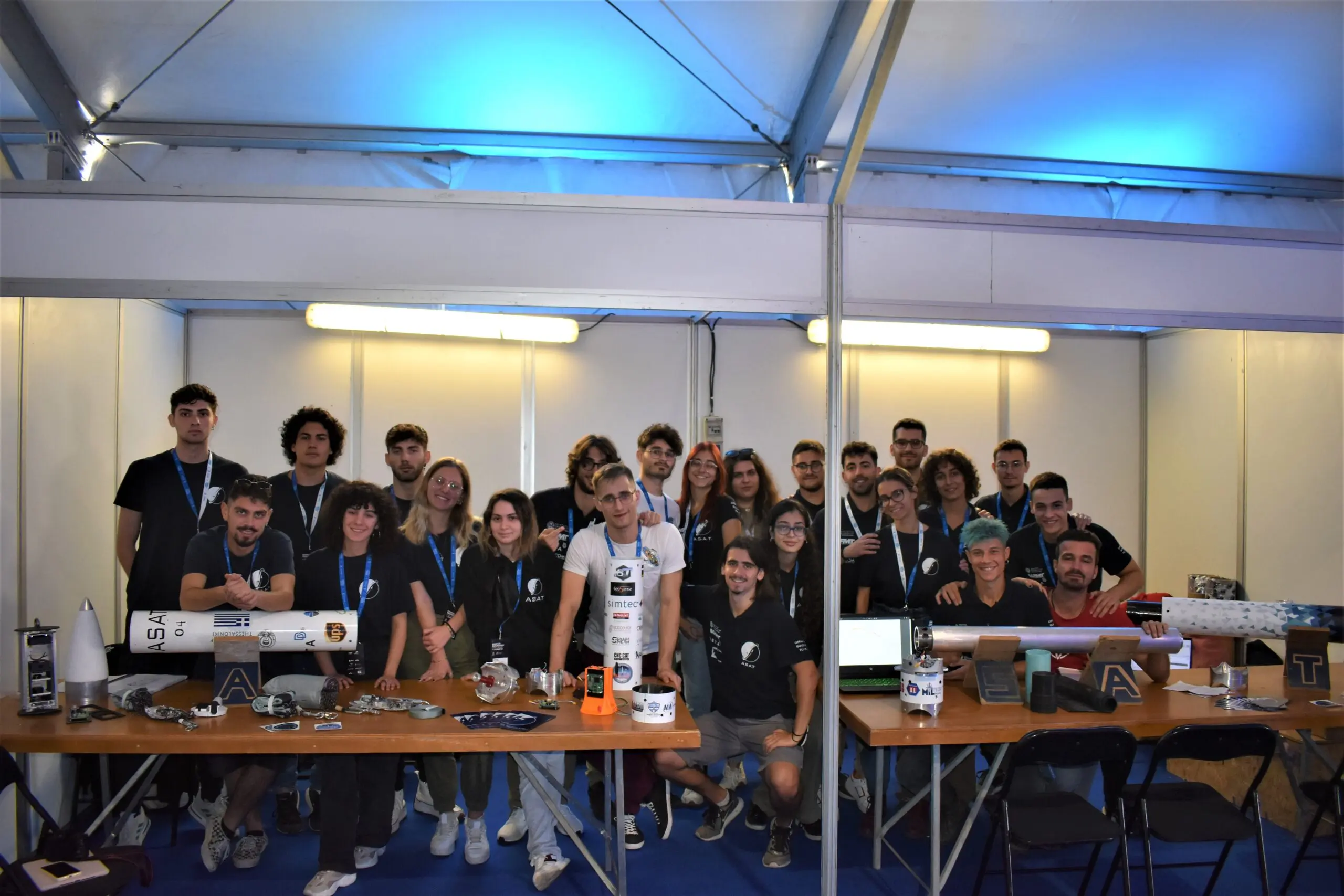Have you ever wondered what Amelia Earhart, Marie Curie, Henrietta Swan Leavitt, and the girls in our team have in common? Of course, in both cases we are talking about female scientists who weren’t afraid to follow their dreams and – if not change – at least improve our world.
Let’s hear what they have to say.
1) Why did you decide to become a member of ASAT?
I decided to join ASAT as, being a third-year student at that time, I was looking for practical applications of the subjects I was studying in theory at school. I think that joining a student team is a great way to do so, as, apart from the technical knowledge you acquire, you also learn how to work in a team and communicate with colleagues. Finally, the team’s project is very interesting and unique and, as the rocketry sector is not widespread enough in Greece, the opportunities to work with it are very few. This is the main reason for my involvement in the team.
(Dimitra Kyrgiafini Angeli, Rocketry Automatic Control Coordinator)
One thing is for sure: as a child I didn’t play with airplanes, nor did I imagine myself as an aircraft engineer! From my first year of study, I was aware of the student teams in my department and witnessed their achievements. Without a doubt, the prospect of becoming a member of one of them seemed tempting, however, what I enjoyed doing the most was still in question and I wanted to get acquainted with more courses to settle down. In my second year, among the other subjects I was interested in, were fluid mechanics. This was the trigger, while the final decision to join ASAT, in the aerodynamics subsystem, came after meeting old members of the team who shared their experiences with me and encouraged me to join. Today, after a year and a bit, I say it was definitely worth it!
(Anna Charizani, Aeronautics Aerodynamics Design Coordinator)
2) Do you receive different treatment as a woman in a male-dominated sector?
There have been some instances where my gender has been a trigger for questioning my knowledge and abilities in areas related to subjects, where the majority of people in the classroom were male.
(Ani Mkrtchyan, Rocketry Recovery Coordinator)

Αlthough I believe there is an improvement in how we are treated as women in male-dominated areas, which unfortunately still exist, we still have a long way to go towards full equality. Although it may not be obvious to an external observer, the different treatment is certainly something that I believe every woman has felt.It may take the form of degrading comments from the academic community. Sometimes it takes the form of humor, and often we are so used to non-decent expressions that they go unnoticed. There are many times, in fact, when we hear comments of admiration that we have chosen to follow a field with minimal female presence, making us feel like an exception to some unwritten rule. All of the above contribute to our feeling that we have a different role from that of our male colleagues, but usually not in a positive way. But let’s not be so pessimistic, attitudes are slowly changing, unwritten rules are not considered laws, more and more women are following this field. With time passing we will stop feeling like an exception and more and more people will follow fields that suit them without being limited by their gender.
(Dimitra Kyrgiafini Angeli, Rocketry Automatic Control Coordinator)
3) Who is your role model woman scientist and why?

I admire so many women in the STEM world, but one that has made a special impression to me is Katherine Johnson. She was a mathematician and worked at NASA, one of the few women at the time. Her calculations were critical to space missions like Project Mercury and Apollo 11. Despite the obstacles she faced, she was able to move forward and make her dream a reality, which is very inspiring to me.
(Nefelli Metallidou, ASAT Vice President & Aeronautics Project Leader)
As a role model I have the Scottish scientist Mary Somerville who, although born in 1780,
was a great mathematician, astronomer, member of the Royal Astronomical Society and
honorary member of the Royal Academy of England. It is well known that in the 18th century
the laws were unfavourable to women and education was difficult and criticized, even for
women who could afford it. But she studied astronomy, chemistry, geography, electricity
and magnetism, translated and wrote a plethora of relevant books, many of which have
been honoured. Most importantly, she supported women’s rights, especially their right to be
educated and to live as freely as they wished, because she herself faced so much hostility in
her studies, but also women’s right to vote and to have political rights.
(Ani Mkrtchyan, Rocketry Recovery Coordinator)
4) Why did you choose to study in STEM?
From the first moment I was introduced to physics, I was impressed by the beauty of the subject. The human effort to understand the world around him and to create according to the laws of physics was something that fascinated me and made me read even more things about the subject. Later I started looking into things on programming as well, and after seeing how cool it is to use your skills creatively, I decided to pursue the field of science.

(Nefelli Metallidou, ASAT Vice President & Aeronautics Project Leader)
Because the horizons and options that open up to you by choosing engineering are really too many and incredibly interesting.
(Erasmia Vlachou, Aeronautics Structural Coordinator)
There are several reasons, but having female role models is very important! The most important influence was my mother as a mathematician from whom I got to know this field of science as something very beautiful. In mathematics, whether something is right or wrong is clear and based on logic. This “simplicity” in thinking, which is not always present in theoretical sciences, is what makes them really enjoyable! In regards to engineering, it’s what makes our world work, so it was an easy choice for me because I wanted to find something more practical where the theory of mathematics could be applied, while knowing that as an engineer I could work in any industry. Once I got into university, it became clear to me that most fields in engineering depend on a large amount of math to get ahead!
(Anna Charizani, Aeronautics Aerodynamics Design Coordinator)
5) What would you say to a girl who wants to study in STEM?
If a girl wants to pursue science, I would advise her to first think about whether the field she really wants to pursue is something that is fulfilling for her, but also to have confidence and trust in herself through constant research and training.
(Ani Mkrtchyan, Rocketry Recovery Coordinator)

I would tell her that if she wants to do something, no matter what it is, she can do it! No one should give up a goal just because of their gender. My biggest piece of advice – and what I tell myself – is that the knowledge you have at a given moment does not determine your entire career. It’s more important to love what you do, as that is what will lead you to seek and gain more knowledge! Therefore, keep pushing yourself, do well in your classes and finally try to find some kind of practical experience, whether it’s an internship or involvement in student groups like ASAT! In the end they will be exactly where they want to be!
(Anna Charizani, Aeronautics Aerodynamics Design Coordinator)
To any young girl who dreams of pursuing science and engineering, I would advise her not to be afraid to pursue what she loves. Loving what you do helps you get better, no matter how scary and difficult something may seem.
(Nefelli Metallidou, ASAT Vice President & Aeronautics Project Leader)
6) If you could meet your model woman scientist what would you ask her?
If I could meet with Mary Somerville, I would like to ask her how she managed, despite the constant disapproval and obstacles she faced in her studies, to overcome them and distinguish herself in the scientific community and in her social work.
(Ani Mkrtchyan, Rocketry Recovery Coordinator)
If I could meet my role model, Merritt Moore, I would certainly ask her how she manages to combine two such demanding fields. On the one hand, scientific research, which requires too many hours of engagement, too much study and shutting down in an office, and on the other hand, dance and specifically ballet which is a very demanding profession. It requires long rehearsals, a strict diet, that is, a very different approach from that of theoretical research.
(Dimitra Kyrgiafini Angeli, Rocketry Automatic Control Coordinator)
If I could meet Katherine Johnson, I would ask her what it was that helped her to keep going, at moments when she wanted to give up. I think it’s something we’ve all thought about when facing great difficulties, and I would love to hear the answer of someone with such great work in such challenging circumstances.
(Nefeli Metallidou, ASAT Vice President & Aeronautics Project Leader)

Our team proves for another year its abstention from any racial discrimination by selecting for important positions girls and boys of equal potential without gender being a selection criterion. We proudly state that ASAT’s main purpose is, through respect and solidarity with each other, to work as a team and take aerospace science to ever higher levels in our country




